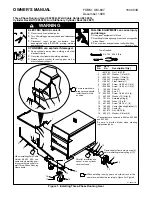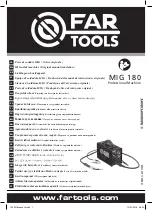
7
Given the limits of your amplifier, if you do
decide to bi-amp the TT1 loudspeakers,
first detach the jumper straps
(see Figure
6)
. Then use two cables to attach each
pair of binding posts on the speaker to a
separate amplifier.
THIEL speakers benefit from a higher cur-
rent, higher quality amplifier (for example,
8 ohm). If you’re connecting the speakers
to an amplifier with various impedance
taps, the nominal impedance of the 3rd
Avenue Collection is 8 ohm; the minimal
impedance is 3 to 4 ohm.
Power requirements of your amplifier
It is important to have enough music power from the amplifier to play the artists you
love at the volume level you desire without distortion.
• If you play the speakers more loudly than the volume your amplifier can cleanly produce,
the amplifier will create what is called overload (clipping) distortion. The sound will
become compressed, strained, and in extreme cases, obviously distorted.
• This distortion is actually nonmusical additional energy. It is concentrated in the high
frequency region, and the tweeter can be damaged in extreme cases.
Sound
quality
is usually more important to discerning listeners than sound
quantity
.
Two amplifiers of equal power can have large differences in their sonic performance.
And that is more important than large differences in power.
Most discriminating listeners will be happier with a 100-watt amplifier of high sonic
quality than a 200-watt amplifier of mediocre quality. For that reason, we feel there is
no substitute for listening carefully when selecting your amplifier.
The question “How much power do I need?” does not have the simple answer most
people expect. The music power needed is determined by three factors: the volume
you prefer, the size of your room, and the speaker’s efficiency rating. Each factor can
raise or lower the average (100 watts) by two or more times.
As shown in
Figure 7
,
a small or average (medium) size room will need less power for a
given loudness level than a large room. Specifically, a very small room (1,000 cu ft or
about 11’ x 11’ with an 8’ ceiling) will require about half the power of a medium size
room. A large room (6,000 cu ft or 20’ x 30’ with a 10’ ceiling) will require twice the
power of a medium size room.
• If your listening room is connected to another room by a large open area, the
required power will increase, but not by the amount of the combined room volume.
• If your listening room has a “dropped” ceiling with light panels, the ceiling will be
almost transparent acoustically and the space above the ceiling should be counted in
the room size. If the light panels are heavy, they will act as a more normal ceiling.
A speaker with a low efficiency rating will require twice the power of a speaker with
average efficiency. And a speaker with a high efficiency rating will require only half the
power of a speaker with average efficiency.
On average, you should have an amplifier that is 100 watts per channel. The minimum
power, average power, and maximum power all depend on the particular speaker model
(see
Figure 8)
.
Figure 6
R O O M S I Z E
AV E R A G E
V O L U M E
T U R N I T U P !
S M A L L ( 1 K C U F T )
5 0 W
1 0 0 W
M E D I U M ( 2 K - 5 K C U F T )
1 0 0 W
2 0 0 W
L A R G E ( 6 K + C U F T )
2 0 0 W
4 0 0 + W
Figure 7
Eff iciency Rating
R O O M S I Z E
D B / 2 . 8 V - 1 M
A V E R A G E
W AT T S / S P E A K E R
S M A L L ( 1 K C U F T )
L O W
8 4
2 0 0 W
M E D I U M ( 2 K - 5 K C U F T )
A V E R A G E
8 7
1 0 0 W
L A R G E ( 6 K + C U F T )
H I G H
9 0
5 0 W
Figure 8
Listening Preference
TT1
Содержание TC1
Страница 1: ...1 SOUND ABOVE ALL Owner sManual TM3 TT1 TC1 ...
Страница 12: ...1 2 NASHVILLE TN THIELaudio com ...






























